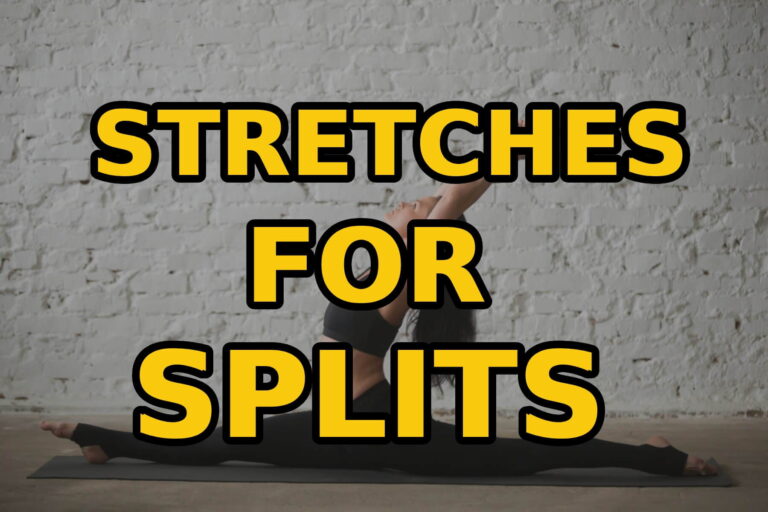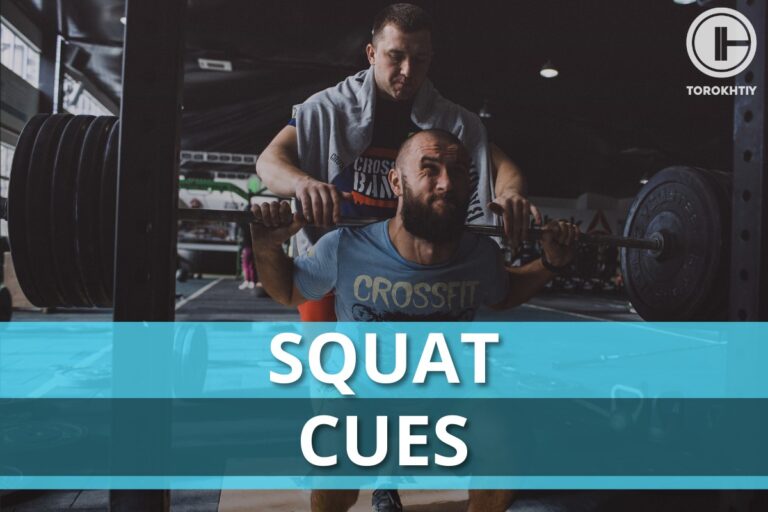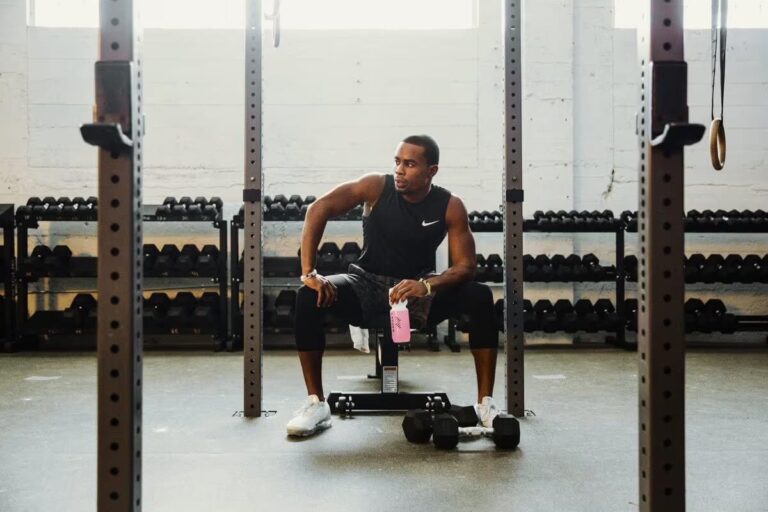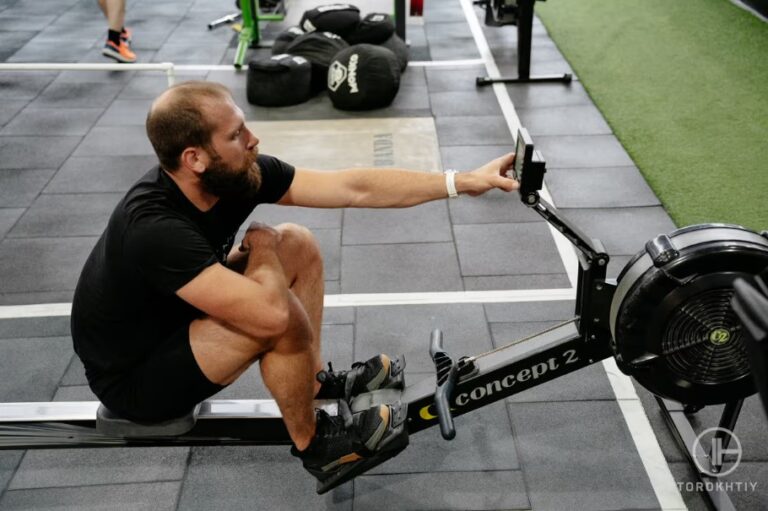Is Sumo Deadlift Easier? Let’s Discuss
Often on fitness forums, you can see a heated discussion surrounding one question – is sumo deadlift easier? On there, you can see many “experts” explaining the differences between conventional vs sumo deadlift and why one is more challenging or better than the other. To help you understand those opinions better and to help you learn more about the sumo deadlift, we will discuss it in this short article.
Below you will find information about what does sumo deadlift work, is sumo easier than conventional, and what the benefits of sumo deadlifts are. So without keeping you waiting any longer, let’s get started.
For some lifters, the sumo deadlift is easier due to the shorter range of motion and because it requires less mobility in the hips. However, that doesn’t mean that the sumo deadlift is a less effective exercise for building strength.

What is the Sumo Deadlift?
Let’s start with the basics – what is a sumo deadlift? Essentially it’s a variation of the traditional deadlift that requires the athlete to take a wider leg stance and to put the arms between their knees instead of on the outside. This way of performing the movement causes the range of motion to become shorter – a reason why many believe the sumo deadlift is easier.
Typically, the sumo deadlift is used as a supplement to the conventional one when someone is training to increase strength. Sometimes it can be used as a way even to substitute the conventional deadlift in an exercise program. The different mechanics and the shorter range of motion may make it easier for someone to lift more weight, thus making it a rather controversial exercise, despite its usefulness.
Benefits of the Sumo Deadlift
The sumo deadlift has many benefits, especially for non-professional athletes or people who have just started weightlifting.
Requires Less Mobility
Beginners often ask, “Is sumo deadlift easier on the lower back?” and the answer is yes. Most people lack mobility in the knees, ankles, and especially the hips. Because of that, the stance and the movement required for the sumo deadlift may feel more comfortable to them. It takes less flexibility in the hip and puts less pressure on the lower back, which can be beneficial as it enables different people to include the deadlift in their exercise regime.
Works the Legs More
If you want to use the deadlift as a way to build strength in the legs, then the sumo variation is the way to go. Due to the upright pulling position, most of the work during the sumo deadlift is done by the legs, meaning that it improves the ability of your lower body to generate force and power while also developing all the lower body muscle groups.
Better for People with Previous Injuries
The conventional deadlift might be too taxing on your body if you have had a lower back or hip injury. On the other hand, a sumo variation is a terrific option that will allow you to still train for strength gains while not aggravating your past injury.

What’s the Difference Between the Sumo Deadlift vs. The Conventional Deadlift? (Is Sumo Easier Than Conventional)
The difference between sumo and conventional is the stance that the lifter takes before lifting the barbell. With conventional deadlifts, your feet should be close together, which creates a longer range of motion and challenges mobility in the hips. On the other hand, when performing the sumo, your legs are supposed to be in a wider stance, thus shortening the range of motion, engaging the leg muscles more, and enabling people with hip mobility issues to perform the exercise.
3 Reasons the Sumo Deadlift is Easier for Some Lifters
Many believe that the sumo deadlift is easier because of the shorter range of motion. However, that’s not necessarily true for all athletes. The advantages that the sumo deadlift stance and movement provide can benefit some lifters due to the specifics of their physique or their training style. Let’s see exactly why the sumo deadlift is easier for some of your gym buddies.
They Have Long Limbs
People that are tall with long arms and legs tend to favor the sumo deadlift over the conventional one. The reason for that is that the shorter you are, the less ROM there will be. On the other hand, longer limbs naturally extend the ROM; thus, the sumo variation is one of the ways to make the ROM more sensible for people with long legs and arms.
Especially for people with long femurs, the sumo deadlift is likely to be a much easier and preferred variation, as the conventional one requires them to bend down low.
Lack of Mobility
Because we often spend our days sitting down – in the car, in an office, or at home, we have compromised hip mobility. And for some people, it’s so bad that they cannot perform the range of motion required for the conventional deadlift. In those scenarios, the sumo is typically the preferred variation, as it doesn’t require a lot of mobility in the hip and is generally less taxing on the lower back.

With that said, we also have to mention that for some individuals, the wider stance required for the sumo deadlift is also challenging. They’re unable to maintain a neutral spine, even with the easier variation. In such cases, it’s better to first work on fixing the mobility issues and then move on to deadlifting.
They Have Powerful Legs
People who have more strength in their lower body also tend to favor the sumo deadlift over the conventional one. That’s typically true for women with legs much stronger than their upper body. Because of that, the sumo deadlift enables them to lift more weight as it generally uses force that comes from the lower body. Also, leg-dominant males also tend to feel stronger performing the sumo deadlift, causing them to prefer this variation over the conventional one.
Is Sumo Deadlift Easier on the Lower Back?
The short answer is yes. But if we have to expand, then it’s true that the sumo deadlift is easier on the back because the stance and the movement required are less stressful for the spine. For example, when you perform the conventional deadlift for most of the movement, the barbell is in front of the body, which increases the shear forces, which can be especially damaging for the spine. They can cause disc herniation or strain the tissues that support the spine, significantly when the forces exceed the force output of the erectors – when this happens, your spine is no longer in a neutral position.
According to research, when doing the sumo deadlift, the shear forces experienced in the lower back decrease by 8%. The main reason for that is the upright position of the torso required for the sumo variation. That’s what makes it easier to keep a neutral spine as well, which dramatically lowers the stress you put on the spine. The body’s positioning during the sumo deadlift requires more power from the hamstrings, glutes, and quads, thus limiting the output needed from the erectors.

For all these reasons, the sumo deadlift tends to be easier on the lower back compared to the conventional one. On the other hand, that’s what makes it more taxing for the lower body and, thus more stressful for the knees.
Should You Switch to the Sumo Deadlift to Prevent Low Back Injury?
If you have had or are currently experiencing any lower back issues, switch to a sumo deadlift as a preventative measure. Not only will it be less aggravating for your lower back, but it’s also beneficial for building strength in your legs and slowly improving your mobility in the hips.
🔻12-Week Deadlift Strength Program by Oleksiy Torokhtiy
Unlock your true potential with our Deadlift Strength Program!
Designed for athletes by 2-time Olympian Oleksiy Torokhtiy, this 12-week program focuses on enhancing your deadlift strength, strengthening your back and legs.
Program details:
- 12 weeks;
- 3 days / week;
- 45-120 minutes per session;
- 50+ specific exercises;
- Focus on New Result in Deadlift;
- One-time payment, no recuring payments;
- Full access to all training content.
Start now and boost your deadlift results!
FAQ
Why Do Sumo Deadlifts Feel Harder?
For some people, sumo deadlifts may feel harder due to a lack of strength in the upper body or extremely compromised hip mobility. The wider stance required for the sumo variation puts a lot of stress on the legs, especially the quads, and it requires you to be able to comfortably bend down with your arms inside your knees – something that’s challenging for some people with mobility issues.
Can You Deadlift More With Sumo?
In most cases, yes, you should be able to lift about 10-15% more on the sumo variation compared to the conventional one. That’s because it has a shorter range of motion, but also because it mainly utilizes the muscles of your lower body, which are typically able to generate more force, compared to the ones in the upper body.
Conclusion
It’s impossible to say with 100% certainty that the sumo deadlift is easier than the conventional. Still, the reality is that for most people, it tends to be for most people, not only because of the shorter range of motion but also because it engages the muscles of the lower body more (which tend to be stronger on average).
Additionally, the sumo deadlift stance is a lot more manageable to achieve. The exercise’s correct form requires less mobility and is a lot easier to do, especially for people with longer limbs and shorter torsos.
Having said all of that, what is your opinion about the sumo deadlift? Is it easier than the conventional one? And even if it is, does that make it a less effective exercise? Share your thoughts with us in the comments below; we’d love to hear from you.
Also read:
- Rounded Back Deadlift
- Deadlift Starting Position
- How to Improve Grip Strength for Deadlift
- Functional Fitness Deadlift Workouts
- How to Increase Deadlift
- What Muscles Does Sumo Deadlift Work
References:
- Sumo vs. Conventional Deadlifts: Which Lift Reigns Supreme? // FIT Club: https://www.fitclubny.com/blog/conventional-vs-sumo-deadlift
- Lumbar spine loads during the lifting of extremely heavy weights // NCBI: https://pubmed.ncbi.nlm.nih.gov/1758295/
- Genes and Athletic Performance: An Update // NCBI: https://pubmed.ncbi.nlm.nih.gov/27287076/
- Muscle fatigue: general understanding and treatment // NCBI: https://www.ncbi.nlm.nih.gov/pmc/articles/PMC5668469/
- How to Do a Deadlift // Very Well Fit: https://www.verywellfit.com/how-to-do-the-deadlift-3498608
Why Trust Us?
With over 20 years in Olympic Weightlifting, our team does its best to provide the audience with ultimate support and meet the needs and requirements of advanced athletes and professional lifters, as well as people who strive to open new opportunities and develop their physical capabilities with us.
By trusting the recommendations of our certified experts in coaching, nutrition, dietology, and sports training programming, as well as scientific consultants, and physiotherapists, we provide you with thorough, well-considered, and scientifically proven content. All the information given in the articles concerning workout programming, separate exercises, and athletic performance, in general, is based on verified data. We ensure that you can rely on our professionals’ pieces of advice and recommendations that can be treated as personalized ones which will benefit you and fully meet your needs.
The product testing process is described in more detail here
Author: Sergii Putsov
Head of Sport Science, PhD
Best Results: Snatch – 165 kg,
C&J – 200 kg
Sergii Putsov, Ph.D., is a former professional weightlifter and National team member, achieving multiple medals in the 94 kg weight category at national competitions. With a Master’s degree in “Olympic & Professional Sport Training” and a Sport Science Ph.D. from the International Olympic Academy, Greece, Sergii now leads as the Head of Sport Science. He specializes in designing training programs, writing insightful blog articles, providing live commentary at international weightlifting events, and conducting educational seminars worldwide alongside Olympic weightlifting expert Oleksiy Torokhtiy.







